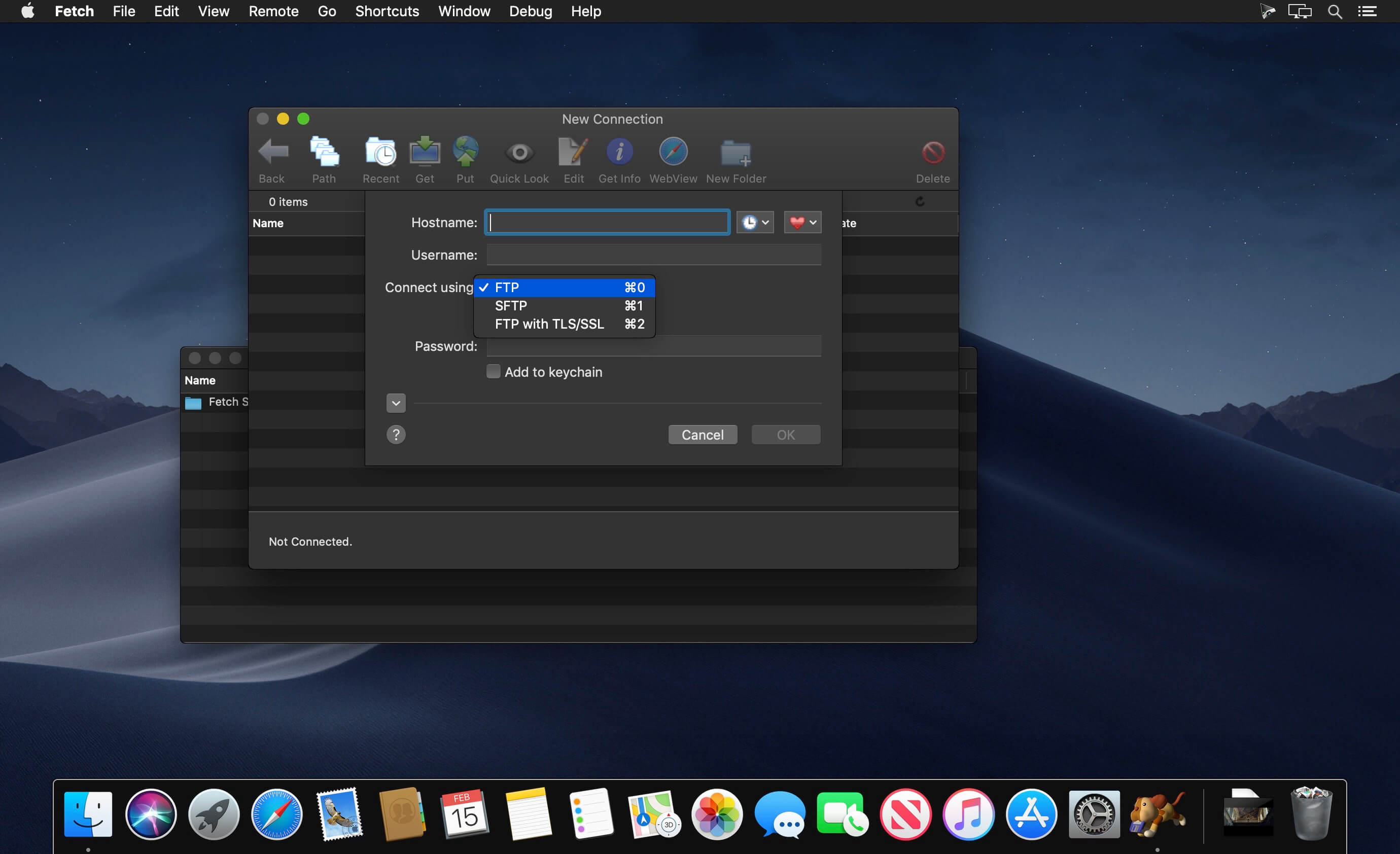

- #Interarchy mojave how to#
- #Interarchy mojave upgrade#
- #Interarchy mojave full#
- #Interarchy mojave download#
You can now see files’ contents in ways made familiar in iTunes and the OS X finder.
#Interarchy mojave download#
This is a boon if you know, for example, that you have something stored remotely but want to avoid having to download multiple files to identify it. A drop box allows (automatic) synching between Macs.įrom an aesthetic point of view, Interarchy 10 has introduced previewing of remote files using Quick Look and Cover Flow. Remote servers can be mounted and files located there can be read from, written to and edited/saved right on the OS X Desktop. In similar vein, this version of Interarchy has strengthened Net Disks. Now it’s extended to transparent cloud transfer to and from three of the major cloud storage services Amazon S3, Google Storage, and Rackspace Cloud. The Cloud (virtual and immediate storage on-line which appears local, like Apple’s MobileMe) has become too popular for the developers of Interarchy not to want to include cloud functionality in the product. At least one independent report (and indeed the findings assembled for this review) confirm the advantage that Interarchy 10 has in speed: At the same time, Interarchy 10 does offer support for over a dozen (such) protocols, including regular FTP, FTP/SSL-TLS, SFTP, SCP, SSH, iFTP, WebDAV, WebDAVS as well as Google Storage, Rackspace Cloud Files, iDisk, Amazon S3, HTTP and HTTPS. It claims to be fast, powerful and secure and seems to be aiming to make “tired old protocols” (the Nolobe site again) like FTP, WebDAV and SFTP obsolete. This lies at the heart of Interarchy 10‘s innovations. In common with the other (new) features in Interarchy 10, this worked well in testing. But then such users would be unlikely to want to write plugins anyway. While it’s straightforward for anyone familiar with Perl and the Unix command line, it might be a little intimidating to those who stay within the Desktop.
#Interarchy mojave how to#
There is a thorough step-by-step tutorial on how to do this (e.g.

There’s a default template for plug-ins which can be downloaded from Nolobe’s website which is simply a Perl subroutine into which you put your own command line code. In fact, Interarchy 10.1 (to be released soon) will make sharing and downloading plug-ins much easier. The scripts show up in Interarchy‘s menu once installed (in ~/Library/Application Support/Interarchy/Plug-ins).Īlthough a number of plug-ins is included with Interarchy 10 (half a dozen Apache-specific server operations eight compression/archiving routines six generic command line scripting examples), Nolobe hopes that a community of plugins will develop enabling users to write and share them. They need the iFTP (Interarchy File Transfer Protocol), which is built on top of ssh.

The commands are written in Perl and can accept input and display results. These might include scripting, compression and archiving — even restarting if you have the necessary privileges. This version, 10, does contain new functionality, though it also builds on the solid base that was inherited when Nolobe (a privately held Australian company based in Pokolbin, New South Wales, Australia) took it over from long time developer Stairways software.Ĭhief amongst these new features is the new plug-in architecture, which allows you to construct command sequences of your own to run directly on the server. In these two respects Interarchy 10 is state-of-the-art. And to make it versatile and easy to use in this case that means to make it as close to the metaphor of Mac-like file handling as appropriate.
#Interarchy mojave full#
This usually means full support for the ‘sftp’ protocol of ‘ssh’ (secure shell). Other than to make it as secure as possible. There really aren’t many variations on the transfer process that can be built into a self-standing GUI-based application as a front-end for the Unix command line operation of File Transfer Protocol, or FTP. It was first released in 1993 and can claim to have been the leading FTP client ever since, enabling (as the site of its current developers, Nolobe, says) “hundreds of thousands of Mac users to upload, download and transfer files across the Internet.”
#Interarchy mojave upgrade#
Upgrade from previous versions of Interarchy: $29.95


 0 kommentar(er)
0 kommentar(er)
